For much of her life, Bat Vardeh kept her love of eating wild fruits and vegetables a secret.
“People would be like, ‘Oh my god, this weird girl is eating things from the bushes and trees,’” she says. “So I just was very closeted about it. It wasn’t like, ‘Yeah, I do this all the time.’”
That all changed when she found a community of like-minded nature lovers in LA, who also enjoyed stopping to smell — and eat — the flowers. Eventually, she decided to form her own foraging group, just for women, called Women Forage SoCal.
“I realized that within this community, it was mostly these old white men that wanted to tell women that they couldn't do it without their help,” says Vardeh. “There was just a really big need for a community where women could meet each other and learn to forage safely, in a judgment-free zone, where they're not going to be told ‘no, you can't do it’ or ‘no, you can only do it if I'm there.’”
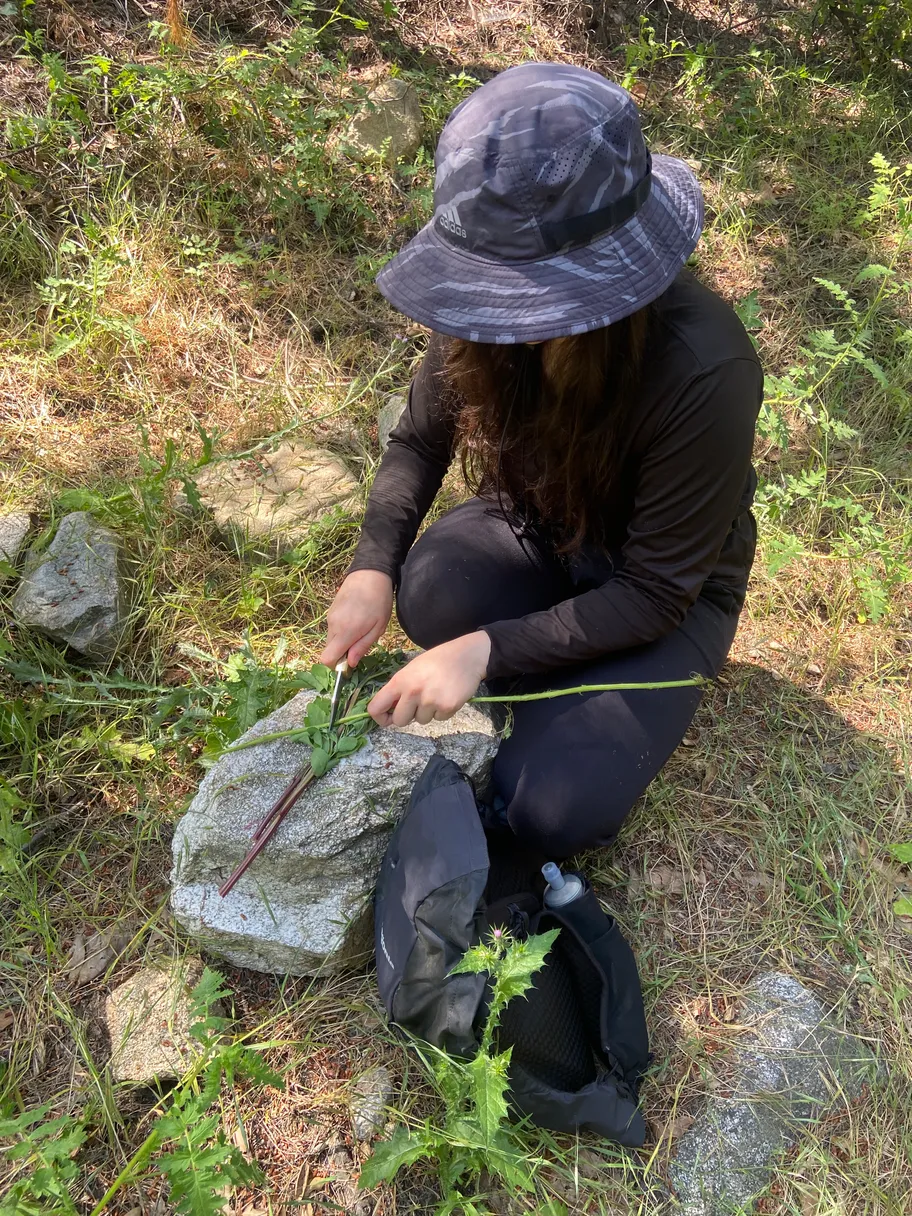
Bat Vardeh cleans the spikes off an invasive thistle in Altadena. Photo by Giuliana Mayo.
Vardeh and her friends make regular forays into residential neighborhoods and wilderness areas in Los Angeles, harvesting everything from the juicy, apricot-like loquats that adorn city streets to leafy greens like lamb’s quarter, which grows all along mountain trails.
“Eating fruit and food from outside, just straight off the tree, is so much better than getting it from the store,” says Vardeh. “It's like that ‘aha!’ moment when you have a tomato out of your garden. You're like, ‘Oh my god, this is what they're supposed to taste like.’ You'll have those ‘aha!’ moments over and over and over from foraging.”
While Vardeh doesn’t cook much herself, she says her fellow foragers get creative with foraged food recipes at the group’s regular potlucks. She has a particular taste for invasive species, like black mustard — a bright-yellow flower that is not native to Southern California, and can edge out indigenous plants that support the local ecosystem.
“An invasive species is a plant that does not belong in this ecosystem, it's not from this area,” says Vardeh. “And in addition to that, it probably puts out so many seeds that it's kind of uncontrollable, and spreads in a way that literally ‘invades’ the space that would be taken up by a native plant.”
Here are a few common edible plants you might spot on your next outdoor excursion:
Lamb’s quarters
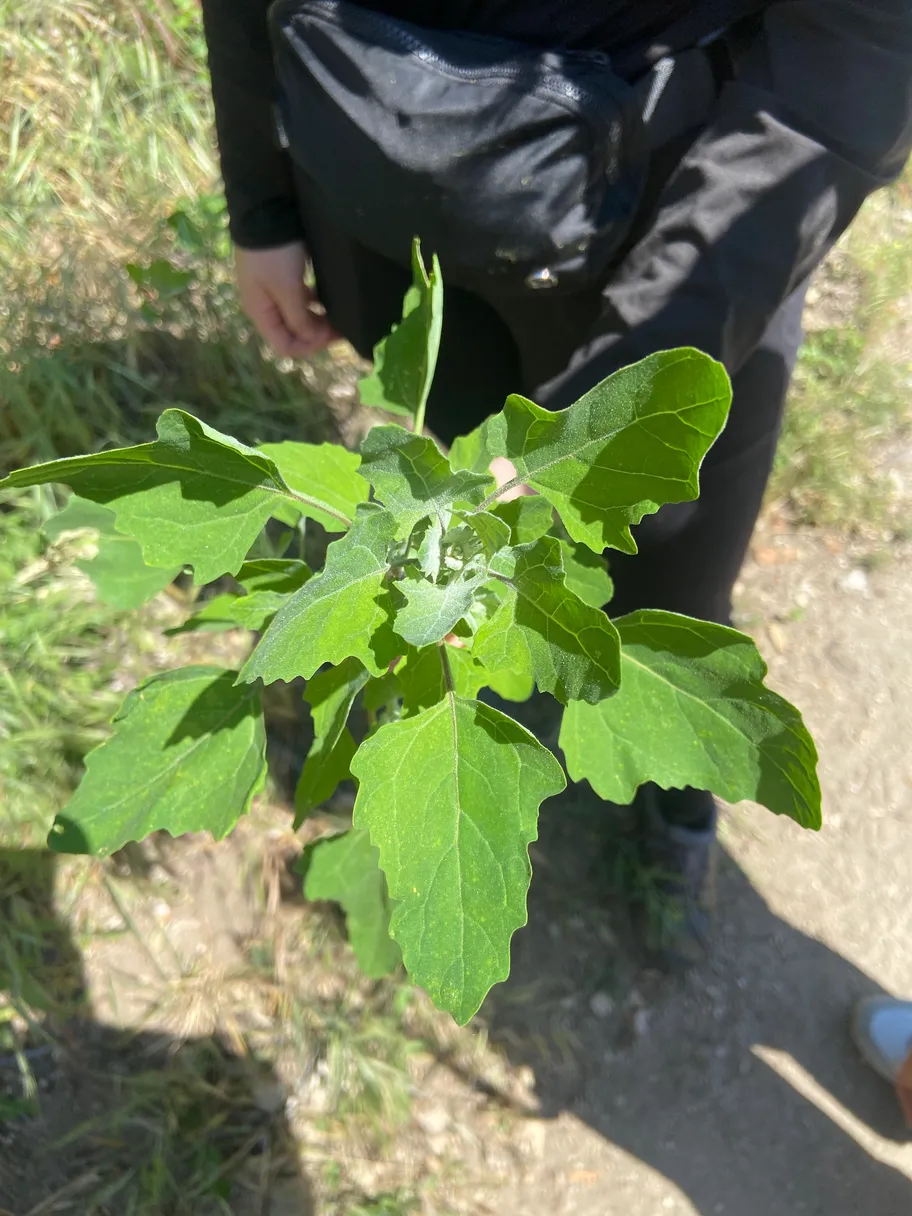
Lamb’s quarters harvested from a trail in Altadena. Photo by Giuliana Mayo.
“I call these poor man's quinoa,” says Vardeh. “So if you can get them … when they're young before they flowered, you can just eat all of [the leaves] like wild spinach. Once it's flowered, the greens won't taste as good. They'll kind of be a little more bitter. So you can eat the seeds, and the seeds cook up like a quinoa. When the seeds are ready … you just flip the top in the bucket and just smack it around.”
Black mustard
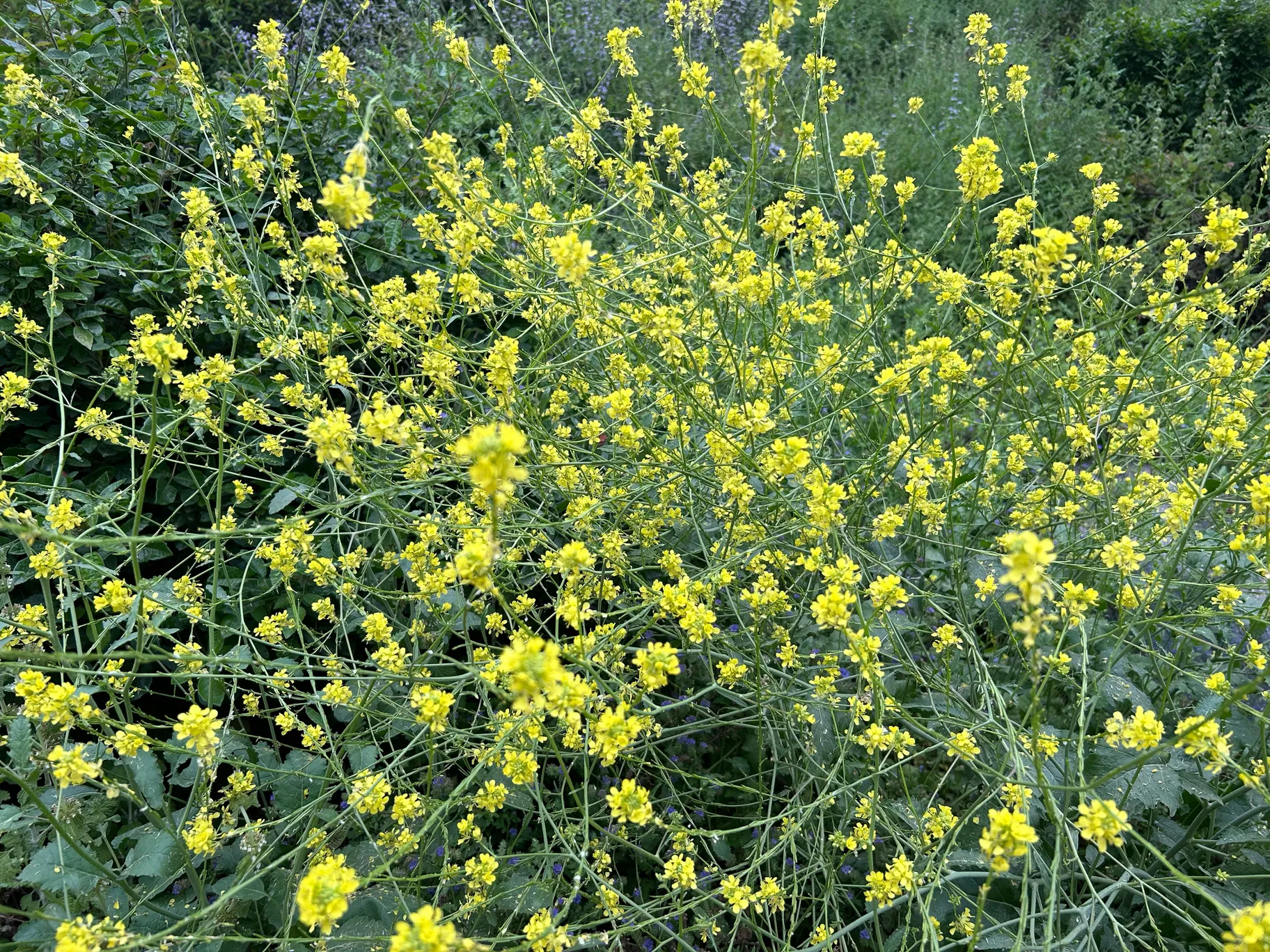
Every part of the black mustard plant is edible. Photo by Zoie Matthew.
Vardeh says the now-prolific black mustard plant was brought to California by Spanish missionaries, who some theorize used it to mark the path of the El Camino Real.
“Mustard sucks. It's everywhere. It's a big sign of colonization, which really, really is just a big slap in the face to Indigenous folks,” she says.
The entire thing is edible, and can be used for a variety of recipes, from kimchi to saag paneer.
“You can eat it, you can eat every part of it. You can eat the flowers to the roots. You can rip it out when you see it and you can stomp on it,” she says. “If you really want to pick some flowers on your next hike, pick all of the mustard flowers … but honestly, if you can just hate the mustard for me that would be great.”
White horehound
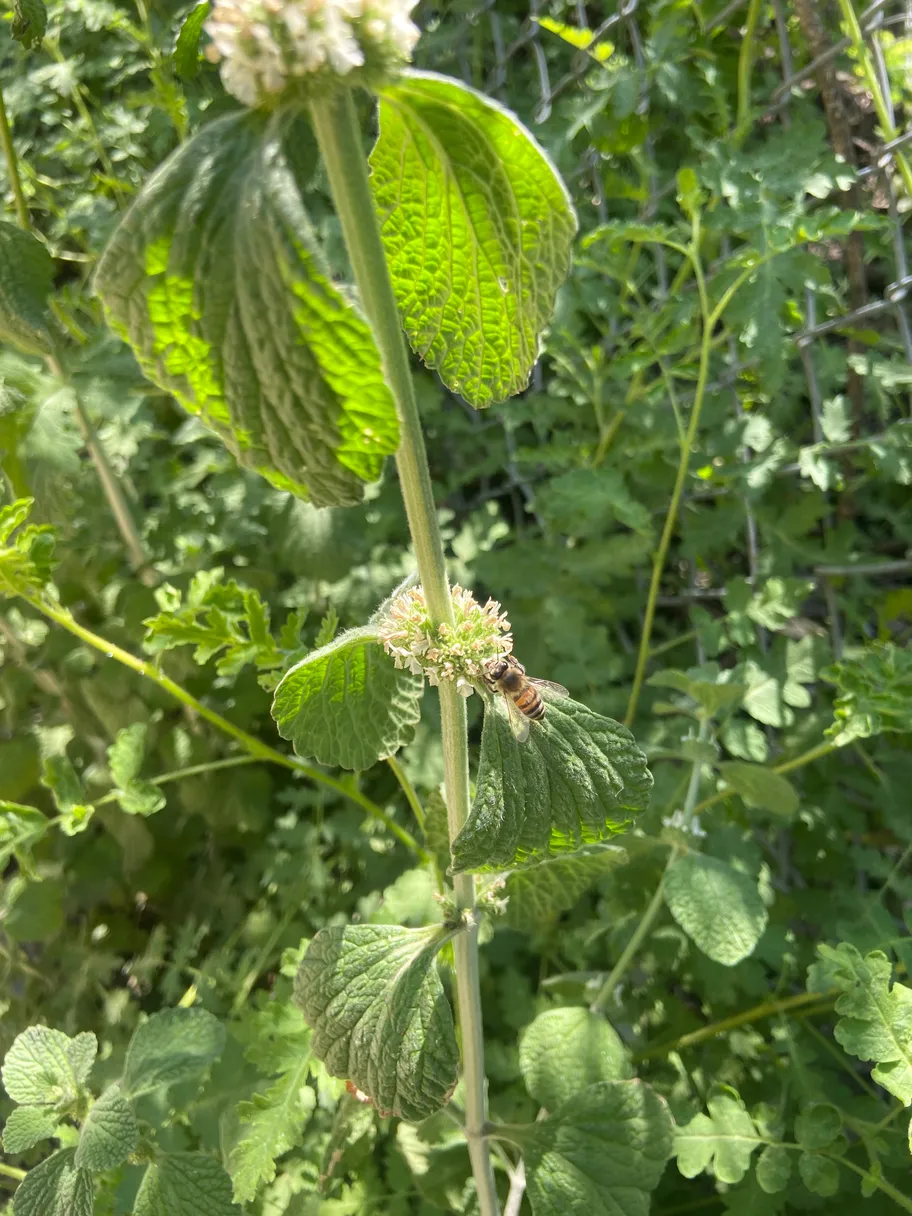
A white horehound plant. Photo by Giuliana Mayo.
“These used to be made into cough medicines. Traditionally, they would mix them with sugar candies, and you would get a cough drop kind of thing,” says Vaedeh. “They're really bitter, so I recommend that if you're going to eat them or do anything with them, definitely add sugar. This is in the mint family, and it's sort of like a bitter wild mint.”
Elderflowers and elderberries
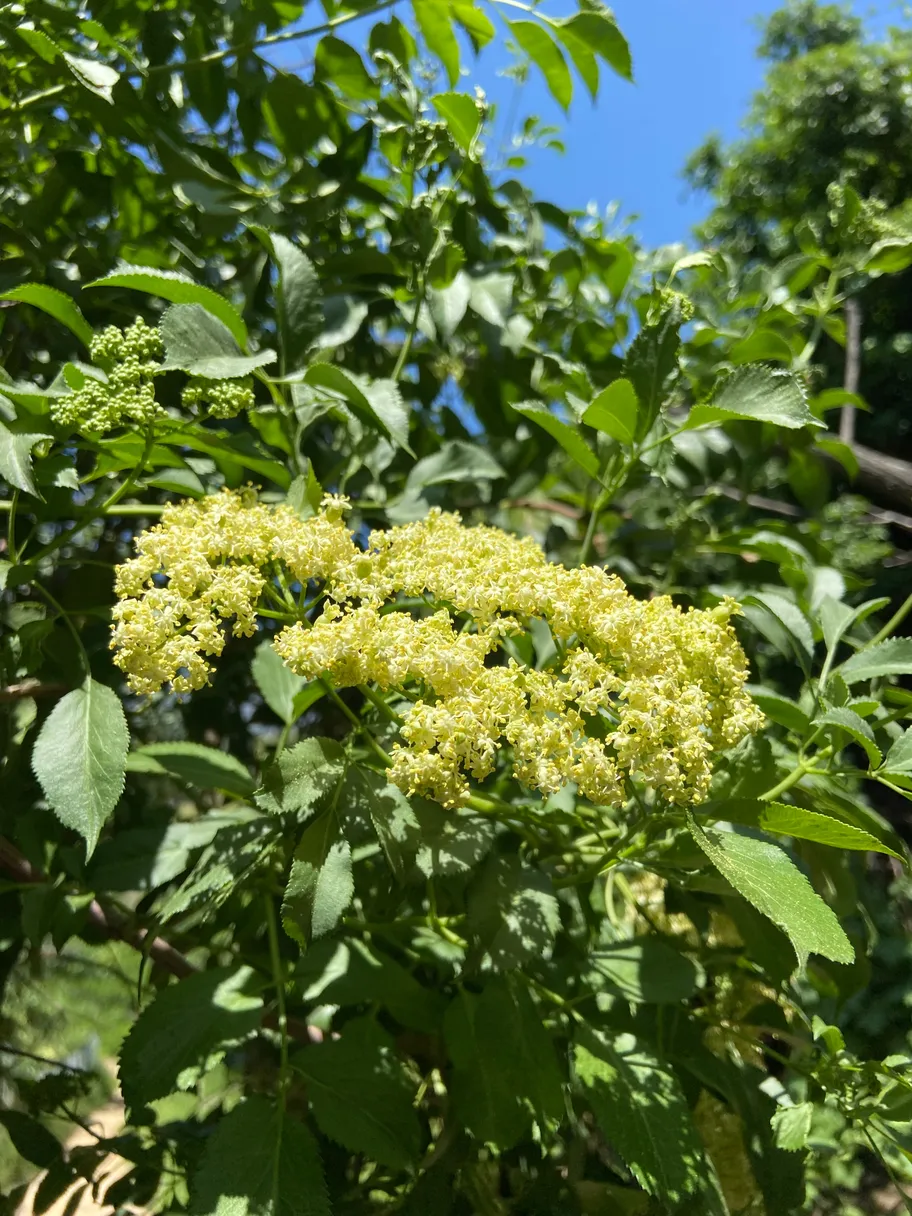
Flowers and berries are the only edible part of an elderberry tree. Photo by Giuliana Mayo.
“Elderberries are actually native here,” says Vardeh. “So with the elderberries and the elder flowers, we tell folks just to be a little more responsible in their foraging and not take much because … you should probably leave some berries for the birds to eat and poop out somewhere else.”
She recommends that if you want to use a large amount of flowers to make something like elderflower jam, you should plant a tree in your yard. But, it’s important to prepare these flowers and berries correctly.
“Every part of the elderberry tree except for the flowers contains cyanogenic glycosides, so they turn into cyanide in your system once they're digested. But they also cook away, so … you have to cook them first,” she says. “Leave as much stem and leaves out of it as you can, because it's really only the flowers that are safe.”
Wild blackberries
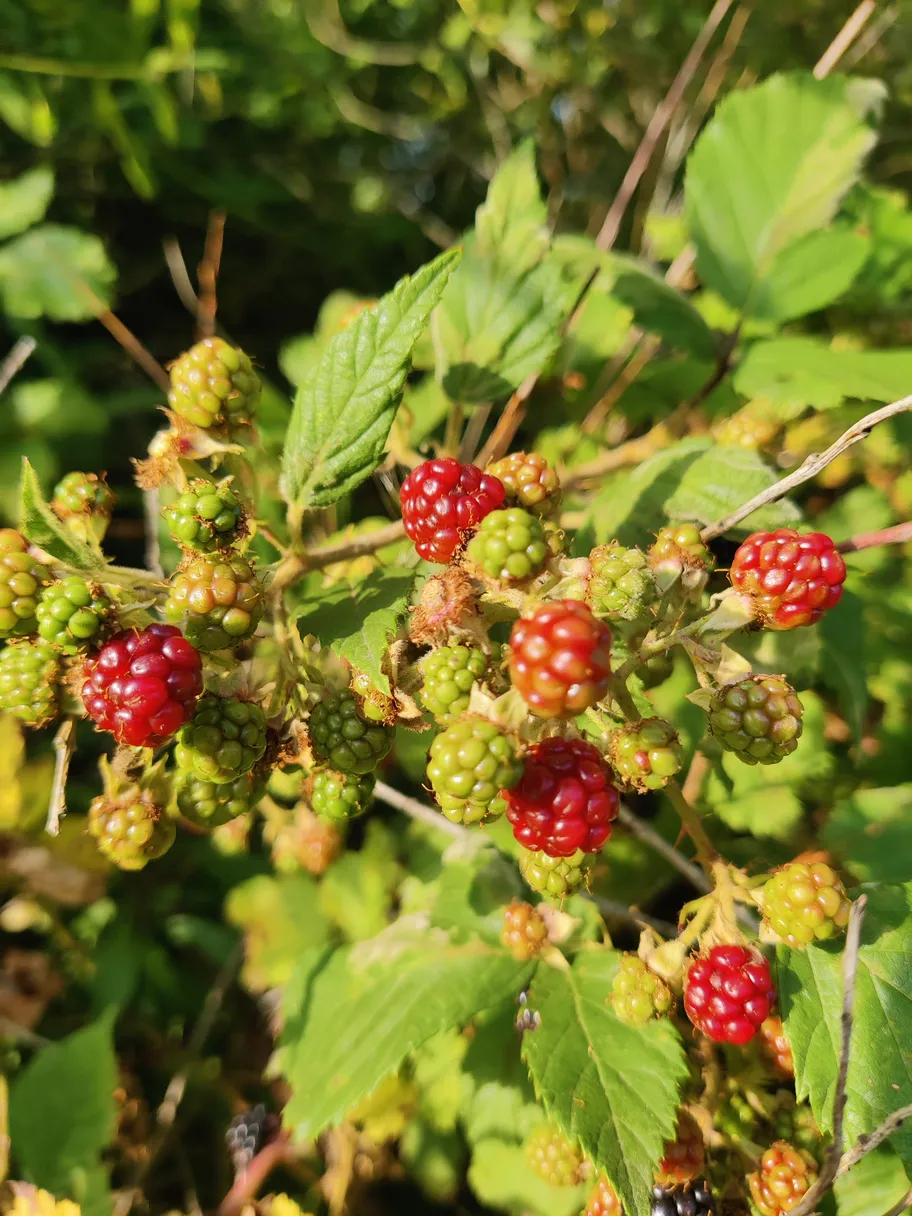
You can tell the difference between native and invasive blackberries by looking at their flowers. Photo by Shutterstock.
Vardeh says both native and non-native blackberries are often found growing by streams. The key to telling the difference is in the flowers.
“The native ones have much longer and wispier white petals, and the invasive ones have sort of bunchy almost strawberry-looking flowers. And they're everywhere,” says Vardeh. “It helps to eat them, and they're tasty,”
For more information on edible plants and upcoming foraging events in LA, follow Women Forage SoCal on Facebook and Instagram.
